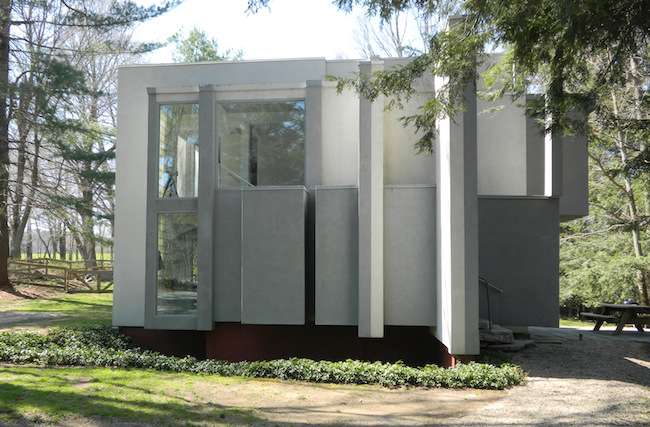
While battles over the fate of Tod Williams Billie Tsien’s American Folk Art Museum and other public buildings make headlines, the architecture world also faces a much bigger, but far less visible, challenge: preserving private homes when families who have protected them—sometimes for four decades or more—decide to sell.
Three of the most important modernist houses in the Northeast, including the 1964 house Robert Venturi designed for his mother, have been (or will soon be) put up for sale by their long-time owners, two of them without covenants that would ensure their preservation.
Among those two is House VI, a masterwork by Peter Eisenman on a six-acre wooded lot in Cornwall, Connecticut, completed in 1975. Its original owners, Suzanne and Dick Frank, are about to offer the house for sale at $1.35 million (the price also includes a Civil War-era schoolhouse converted into a one-bedroom cottage). The Franks say that prominent architects, including Frank Gehry and Philip Johnson, have visited the house over the years. They are planning to upgrade the kitchen and bath, in addition to having the Dryvit surfaces power-washed to eliminate 40 years of dirt, before making the listing public.
“We don’t want to put any restrictions on the buyer,” says Mrs. Frank. The couple’s broker, Stephen Drezen of Sotheby’s, conceded that, given the beauty of the site and the prestigious Cornwall location—he dropped the names of several celebrity neighbors—some buyers might want to tear down the one-bedroom Eisenman and build a larger house.
"It's their house, and they should do what they want with it," says Eisenman, mentioning that one of his other houses has been torn down. Of the possibility that House VI, too, could be demolished, he says of the Franks, "I think they feel worse than I do."
Meanwhile, Louis Kahn’s Esherick House (1961) in Philadelphia’s Chestnut Hill neighborhood is languishing, five years after its owners, Robert and Lynn Gallagher, first put it on the market. The asking price in 2008 was $2.4 million. Since then, Robert Gallagher has died, and his son, real estate broker Patrick Gallagher, has presided over a series of price reductions, most recently to $1.1 million. Gallagher says his father and stepmother bought the house from its second owners in 1981, and they had the good sense not to change a thing.
The house is listed with the City of Philadelphia Historical Commission, which means that any facade changes would have to be approved. But, Gallagher says, “You could do anything you want inside.” The high price, even after the reductions, is likely to scare away anyone who doesn’t love Louis Kahn’s design. A typical house in the same zip code, Gallagher says, goes for about $600,000, suggesting that he still hopes to get an “architecture premium” of nearly 100 percent.
Just a block away, Agatha Hughes is preparing to sell the extraordinarily influential house designed by Robert Venturi for his mother, Vanna Venturi, between 1962 and 1964. (It is sometimes called Mother House for its original occupant and for its influence on generations of architects.) In 1973, Mrs. Venturi sold the house to Thomas P. Hughes, a professor of history at the University of Pennsylvania, and his wife, Agatha, an artist. Their daughter, Agatha, says the family can’t afford to keep it, but she also says she won’t sell it until a preservation easement is in place, allowing a third-party institution to monitor the building’s conservation in the future. Her father prepared an easement with help from Venturi Scott Brown and Associates. Her task now is to find an organization to accept it.
Hughes has spent three years getting the house ready for new owners. “There were age-related problems that I wasn’t aware of. Until I had a very large leak in my dining room, I didn’t know the wood siding was rotting underneath the paint, even though it had been painted many times.” One roof section rus]ted from the inside, requiring a $37,000 repair. But she is taking the opportunity to make the house more durable. For instance, she is using mahogany, a wood Venturi couldn’t afford 50 years ago, for window frames. She describes the job as a labor of love. Among the fun parts was working with Venturi to choose a grayish-green paint for the exterior walls. She says, “The house is now the best color it’s ever been.”



Post a comment to this article
Report Abusive Comment